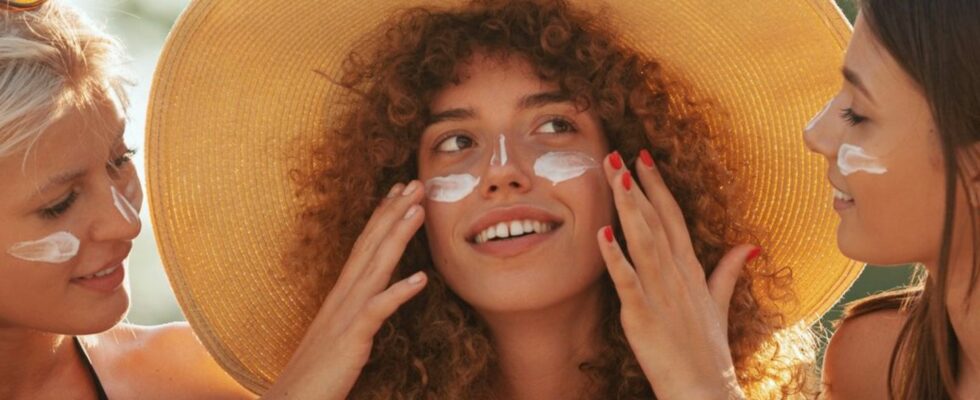For a spring without sunburn
You should follow these five sunscreen rules
Sunscreen protects the skin from skin diseases in the long term.
© Tijana Moraca/Shutterstock.com
Sunlight can be so beneficial, but it can also pose risks. If you follow these five sunscreen rules, you will minimize the risk of sunburn.
Spring is here and with it the warm rays of sunshine that lure us outside. But this also increases the risk of sunburn – especially when our skin has to slowly get used to the UV rays again. Even two or three of the painful rednesses in childhood can increase the risk of skin diseases in adulthood many times over. That’s why it’s even more important to be present not only on vacation, but also in everyday life Sunscreen to protect against UV radiation. But it is also important that the sun protection is applied correctly. These five rules will help.
Take your own protection time and skin type into account
Every skin is different. When choosing sun protection, you should therefore be guided by your own light type or skin type, but also the UV index. Skin type 1 is the Irish-Celtic type, which doesn’t tan particularly well and gets sunburned very easily. Skin type 4 is the Mediterranean type, which tans quickly and has a long self-protection time. The UV index is a scale from 1 to 10 introduced by the World Health Organization (WHO) – the higher the value, the faster sunburn occurs.
The required sun protection factor (SPF) can be easily calculated using these two factors: With a quick Google search, call up the current UV index and multiply it according to the light type – for type 1 by four, type 2 by three and so on. For example, a person with very light skin would need SPF 28 or the usual SPF 30 with a UV index of 7.
At least four heaped tablespoons for the whole body
It is also important to apply sunscreen correctly. In order to adequately protect the entire body of an adult from UV light, it is required according to the Federal Office for Radiation Protection about four heaping tablespoons of sunscreen, which is equivalent to 30 milliliters or a full handful of lotion. This is the only way to reliably maintain the sun protection factor. Even with half as much sunscreen, the protection is reduced by around two thirds.
You need about as much sun lotion per body part as fits on two fingers. Of course, it is important to take into account that not every body part is the same size for every person and may need more.
Don’t forget sensitive skin areas
Before sunbathing, you are often in a hurry and just quickly apply cream to your face with a few hand movements. Some places are often overlooked – for example the ears, the hairline or the top of the head. But it is precisely these parts of the body that are often particularly exposed to the sun. If you sweat a lot on your forehead, you should also regularly apply cream to your hairline, as sweat wears off the sun protection more quickly. It is even better to wear a hat that covers your ears and hair when UV radiation is high.
Particular attention should also be paid to the very sensitive areas of the skin where the skin layer is usually thinner, such as the lips and eye area.
Reapply, reapply, reapply
Anyone who spends long periods of time in the blazing sun needs to reapply. The Federal Office for Radiation Protection recommends applying a first layer over a large area 20 to 30 minutes before sunbathing. However, this is not enough if you spend a long time in the sun: you should apply generous amounts of cream at least every two hours, after bathing or drying off.
By the way: Many people believe that the more thoroughly the sunscreen is massaged into the skin, the better the protection. However, the opposite is the case. If the cream is rubbed too intensively, it loses some of its protective effect.
Pay attention to the ingredients
Environmental aspects also come into play when choosing the right sun protection. Many creams, lotions or gels contain chemical UV filters that get into the water when you bathe. In Hawaii and other US states, UV filters such as octinoxate or oxybenzone have been banned since 2021. In Europe too, there are now more and more coral-friendly sunscreens on the market.
You should also consider whether a sunscreen only protects against UVB or also against UVA rays. This is usually marked separately. Both are harmful to the skin, but the latter poses a greater danger because a much larger proportion of them reach the earth’s surface.
